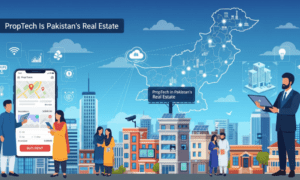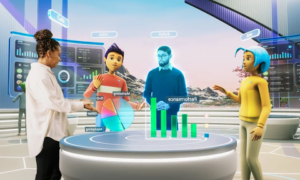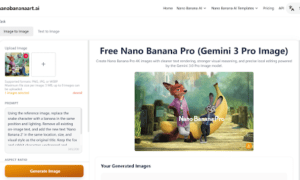The automotive industry finds itself at a pivotal juncture, with digital transformation and innovative marketing strategies reshaping the way brands connect with consumers. The traditional methods of automotive marketing have given way to a more dynamic, data-driven approach that prioritizes personalization, sustainability, and immersive experiences. This shift is not merely a trend but a fundamental change in how the industry operates, adapts to consumer preferences, and navigates the complex digital ecosystem.
The Digital-First Paradigm
Automotive marketing has taken a major turn, leaning heavily into digital-first strategies. This year, the industry’s digital marketing spending is projected to reach $19.3 billion, marking an 8.4% increase from the previous year. This substantial investment underscores the industry’s commitment to digital channels as the primary means of reaching and engaging consumers.
The transition to digital has been accelerated by changing consumer behaviors, particularly in the wake of global events that have reshaped how people research and purchase vehicles. According to recent studies, 92% of potential buyers now research vehicles online before making a purchase. This shift has profound implications for automotive marketers, who must now create comprehensive digital experiences that cater to well-informed consumers at every stage of the buying journey.
Social media platforms, search engine advertising, and video content have become the cornerstones of automotive marketing strategies. Brands like Tesla have demonstrated the power of this approach, eschewing traditional advertising in favor of social media engagement and word-of-mouth marketing. This strategy has not only reduced marketing costs but has also fostered a loyal customer base that feels deeply connected to the brand’s vision and values.
The rise of digital marketing has also led to the emergence of new metrics and key performance indicators (KPIs) that go beyond traditional sales figures. Engagement rates, sentiment analysis, and customer lifetime value have become crucial measures of success. Automotive marketers are now tasked with creating content that not only drives sales but also builds long-term relationships with consumers across multiple digital touchpoints.
Personalization and Data-Driven Marketing
One of the most significant advantages of digital marketing is the ability to deliver highly personalized experiences to consumers. Through sophisticated data analytics and consumer profiling, automotive manufacturers can now craft campaigns that speak directly to individuals based on their preferences, behaviors, and even location. This level of personalization extends beyond simple demographic targeting, delving into psychographic factors that influence car-buying decisions.
Artificial Intelligence (AI) plays a crucial role in this personalization effort. AI-powered tools analyze vast amounts of consumer data to predict preferences, optimize ad placement, and even customize vehicle configurations in real-time. For instance, Power BI and similar analytics platforms are enabling dealerships and manufacturers to make data-driven decisions, anticipate market trends, and tailor their marketing efforts with unprecedented precision.
The automotive AI software market is expected to reach around $200 billion by 2032, highlighting the industry’s commitment to leveraging AI for marketing and beyond. This investment in AI is not limited to marketing applications; it extends to the vehicles themselves, with advanced driver assistance systems (ADAS) and autonomous driving features becoming key selling points for many brands.
Personalization efforts are also extending to the in-car experience. Stellantis and Mercedes-Benz have integrated ChatGPT to allow passengers to interact more naturally with their vehicles, offering insights on destinations and local attractions. This level of personalization is setting new standards for what consumers expect from their vehicles, blurring the lines between transportation and personal assistant.
The Influence of Influencers
Influencer marketing has emerged as a powerful tool in the automotive industry’s digital arsenal. Top NASCAR drivers, for example, have become influential brand ambassadors, with figures like Kyle Busch (1.8 million followers), Chase Elliott (1.5 million followers), and Denny Hamlin (1.1 million followers) boasting significant social media followings.
This trend is set to continue this year, with automotive brands increasingly partnering with a diverse range of influencers, from professional athletes to lifestyle creators. These partnerships go beyond traditional endorsements, focusing on authentic storytelling that resonates with target audiences. The success of such collaborations is evident in the engagement rates and earned media value (EMV) generated by these campaigns.
Influencer partnerships are particularly effective in reaching younger demographics, who are more likely to trust recommendations from social media personalities than traditional advertising. Automotive brands are leveraging this trust to introduce new models, highlight technological features, and promote sustainable initiatives in ways that feel organic and relatable to their target audience.
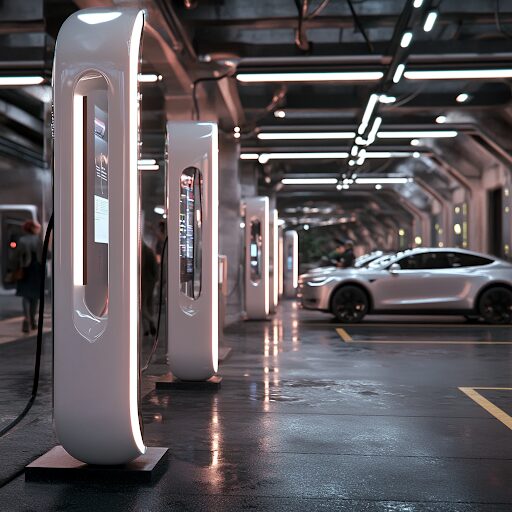
Sustainability and Electric Vehicles
Sustainability has taken center stage in automotive marketing as the world becomes increasingly conscious of environmental issues. The transition to electric vehicles (EVs) is not just a technological shift but a marketing revolution. Brands are now competing not only on performance and luxury but on their commitment to sustainability and innovation in eco-friendly technologies.
Gartner estimates that EV (bus, car, van and heavy trucks) shipments will grow 17% this year. By 2030, Gartner predicts that more than 50% of all vehicle models marketed by automakers will be EVs. This rapid growth is driven by a combination of factors, including government incentives, improving battery technology, and shifting consumer preferences.
Marketing campaigns are heavily focused on showcasing the environmental benefits of EVs, the advancements in battery technology, and the overall reduction in carbon footprint. This shift is also reflected in the choice of influencers and brand ambassadors, with a growing preference for sustainability-focused creators who can authentically communicate the benefits of electric mobility.
The emphasis on sustainability extends beyond the vehicles themselves to the entire brand ethos. Automotive companies are increasingly highlighting their use of eco-responsible materials, sustainable manufacturing processes, and commitment to reducing their overall environmental impact. This holistic approach to sustainability marketing is resonating strongly with environmentally conscious consumers, particularly younger demographics.
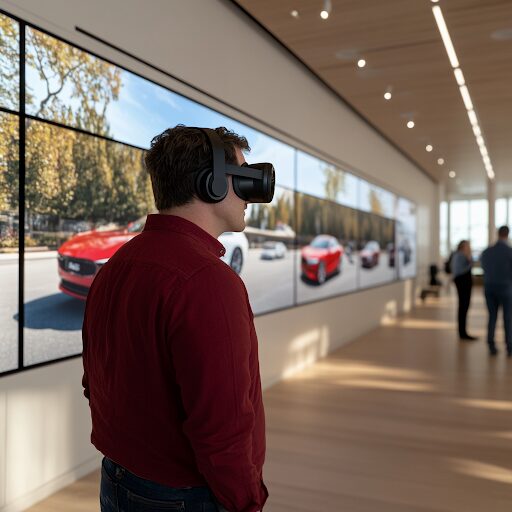
Immersive Technologies and Virtual Experiences
The integration of immersive technologies like Augmented Reality (AR) and Virtual Reality (VR) has transformed the car-buying experience. Now, potential buyers can take virtual test drives, customize their vehicles in real-time, and even experience simulated road conditions, all from the comfort of their homes. These technologies not only enhance the buying experience but also serve as powerful marketing tools, allowing brands to showcase their vehicles in innovative and engaging ways.
Virtual showrooms have become increasingly sophisticated, offering 360-degree views of vehicles, detailed specifications, and even virtual sales assistants powered by AI. This blend of technology and marketing has proven particularly effective in reaching younger, tech-savvy consumers who value convenience and interactive experiences.
The rise of the metaverse and other immersive digital environments is opening up new possibilities for automotive marketing. Brands are creating virtual worlds where consumers can interact with vehicles in ways that would be impossible in the physical realm, blurring the lines between marketing, entertainment, and product experience.
The Rise of Content Marketing
Content marketing has evolved into a cornerstone of automotive digital strategies. Brands are investing heavily in creating high-quality, informative content that educates consumers about their products, industry trends, and technological advancements. This approach goes beyond traditional advertising, focusing on building long-term relationships with consumers through valuable, engaging content.
Video content, in particular, has seen a surge in popularity. From detailed product reviews and behind-the-scenes glimpses of manufacturing processes to storytelling campaigns that highlight the brand’s heritage and values, video has become an indispensable tool for automotive marketers. Platforms like YouTube, TikTok, and Instagram Reels are being leveraged to create bite-sized, shareable content that appeals to a wide range of audiences.
The rise of independent content creators and automotive enthusiasts on platforms like Substack has also created new opportunities for brands to engage with niche audiences. By partnering with these creators, automotive companies can tap into highly engaged communities and build credibility through authentic, expert-driven content.
Omnichannel Marketing Strategies
This year, the line between online and offline marketing has blurred significantly, giving rise to sophisticated omnichannel strategies. Automotive brands are creating seamless experiences that integrate digital touchpoints with physical interactions, ensuring a consistent brand message across all platforms.
This omnichannel approach extends to the sales process, with many brands adopting a hybrid model that combines online research and configuration tools with in-person dealership experiences. The goal is to provide a frictionless journey from initial interest to final purchase, accommodating the preferences of diverse consumer groups.
Despite the growing importance of digital channels, physical dealerships continue to play a crucial role in the automotive marketing ecosystem. In fact, 79% of consumers still prefer in-person shopping experiences when it comes to purchasing a vehicle. The challenge for marketers is to create a cohesive brand experience that seamlessly blends digital and physical touchpoints, providing consumers with the best of both worlds.

The Power of Real-Time Data in Motorsports Marketing
The intersection of motorsports and real-time data has opened up new avenues for fan engagement and marketing opportunities. During major events like the Daytona 500, platforms broadcast over 370 million messages, with more than 56,000 users simultaneously connected. This real-time data stream includes telemetry, lap times, and in-car communications, bringing fans closer to the action than ever before.
For marketers, this presents an opportunity to engage with a highly engaged audience in real-time, creating targeted campaigns that capitalize on the excitement of live events. The ability to deliver personalized content and offers based on real-time race data has become a powerful tool for automotive brands looking to connect with motorsports enthusiasts.
The integration of real-time data into motorsports marketing is also driving innovation in other areas of automotive marketing. Brands are exploring ways to leverage similar real-time engagement strategies in their broader marketing efforts, creating dynamic, responsive campaigns that adapt to consumer behavior and market conditions in real-time.
The Challenge of Data Privacy and Ethical Marketing
Concerns about privacy and ethical use of consumer information have come to the forefront as automotive marketing becomes increasingly data-driven. This year, successful automotive marketers are those who can balance the desire for personalization with the need to respect consumer privacy. This involves being transparent about data collection practices, providing clear opt-out mechanisms, and ensuring compliance with evolving data protection regulations.
Ethical marketing practices extend beyond data privacy to include truthful advertising, responsible messaging around vehicle capabilities and safety features, and a commitment to diversity and inclusion in marketing campaigns. Brands that prioritize these ethical considerations are finding that they not only comply with regulations but also build stronger, more trusting relationships with their customers.
The automotive industry is also grappling with the ethical implications of AI-driven marketing and autonomous vehicle technology. As these technologies become more prevalent, marketers must navigate complex questions about transparency, accountability, and the potential societal impacts of their products and marketing practices.
The Evolution of Search Engine Optimization
Search Engine Optimization (SEO) remains a critical component of automotive digital marketing strategies. However, the nature of SEO has evolved significantly, with a greater emphasis on voice search optimization, local SEO, and content that answers specific user queries. Automotive brands are focusing on creating comprehensive, authoritative content that addresses the entire customer journey, from initial research to post-purchase support.
The rise of zero-click searches and featured snippets has also influenced SEO strategies, with brands vying for top positions in search engine results pages (SERPs) to capture user attention without requiring a click-through to their website. This shift has led to a greater focus on structured data and schema markup to help search engines understand and display content more effectively.
Voice search optimization has become particularly important as more consumers use voice-activated devices and in-car voice assistants to search for information about vehicles and automotive services. Brands are adapting their content strategies to cater to natural language queries and conversational search patterns.
Navigating Economic Pressures and Market Volatility
The automotive industry is operating in a complex economic environment, characterized by fluctuating interest rates, supply chain challenges, and shifting consumer spending patterns. As of March 2025, average new auto loan rates are 9.68%, while used auto loan rates are 14.72%. These factors have significant implications for marketing strategies, requiring brands to be agile and responsive to market conditions.
Global vehicle sales are forecasted to grow by just 2.7%, reaching 98.7 million units in 2025. This modest growth is attributed to economic pressures such as high vehicle prices, consumer debt, and potential policy shifts that are expected to constrain demand for big-ticket items like vehicles.
One notable trend is the increasing focus on value-based marketing, highlighting affordability, long-term cost savings (particularly for electric vehicles), and flexible financing options. Marketers are also emphasizing the reliability and durability of vehicles, appealing to consumers who may be more hesitant to make large purchases in uncertain economic times.
The Role of Public Relations in Shaping Brand Perception
Public relations plays a crucial role too in the automotive industry in shaping brand perception and managing corporate reputation. PR strategies have expanded beyond traditional media relations to encompass a wide range of activities, including crisis management, thought leadership, and corporate social responsibility initiatives.
Effective PR campaigns in the automotive sector are those that can navigate complex issues such as sustainability commitments, technological advancements, and regulatory compliance while maintaining a positive brand image. This involves not only reactive strategies to address potential crises but proactive efforts to position brands as industry leaders and innovators.
Social media and digital platforms have reshaped PR, pushing brands to be more transparent, responsive, and authentic in how they communicate. PR professionals are increasingly working in tandem with digital marketing teams to ensure consistent messaging across all channels and to leverage social listening tools to monitor and respond to consumer sentiment in real-time.

The Future of Automotive Events and Experiential Marketing
While digital marketing dominates, physical events and experiential marketing continue to play an important role in brand building and customer engagement. However, the nature of these events has evolved, with a greater emphasis on hybrid experiences that blend physical and digital elements.
Virtual car launches, augmented reality showrooms, and interactive online events have become commonplace, allowing brands to reach a global audience while still providing immersive, hands-on experiences. These hybrid events not only cater to changing consumer preferences but also offer more sustainable alternatives to traditional, large-scale automotive shows.
Experiential marketing has also extended to the test drive experience, with brands creating elaborate, themed test drive events that go beyond simply showcasing a vehicle’s performance. These experiences are designed to create emotional connections with potential customers and generate shareable content for social media, amplifying the reach of the event beyond its physical attendees.
Adapting to Shifting Media Trends
The shift from traditional journalism to independent content creation has had a profound impact on automotive marketing strategies. Brands are increasingly partnering with influential content creators, automotive enthusiasts, and industry experts to reach niche audiences and build credibility.
Platforms like Substack have emerged as important channels for in-depth automotive content, allowing writers and analysts to build dedicated followings. Automotive marketers are learning to navigate this new media landscape, developing strategies to engage with these independent voices and leverage their influence to reach target audiences.
This shift has also led to a reevaluation of traditional media relationships. While established automotive publications still play an important role, brands are diversifying their media strategies to include a wider range of digital influencers, podcasters, and niche content creators who can provide authentic, specialized coverage of their products and technologies.
The Importance of Brand Purpose and Social Responsibility
Consumers are more conscious than ever about the social and environmental impact of their purchasing decisions. Automotive brands are responding by clearly articulating their brand purpose and demonstrating their commitment to social responsibility.
This goes beyond environmental initiatives to include diversity and inclusion efforts, community engagement, and ethical business practices. Successful automotive marketing campaigns are those that can authentically communicate these values and demonstrate tangible actions that align with the brand’s stated purpose.
Brands are increasingly focusing on storytelling that highlights their contributions to society, from sustainable manufacturing practices to initiatives that support local communities. These efforts not only resonate with socially conscious consumers but also help to build long-term brand loyalty and differentiation in a crowded market.

Leveraging User-Generated Content and Community Building
User-generated content (UGC) has become a powerful tool in automotive marketing, providing authentic, relatable content that resonates with potential buyers. Brands are actively encouraging customers to share their experiences, creating dedicated hashtags and social media campaigns to showcase real-world usage of their vehicles.
Community building efforts have also intensified, with brands creating online forums, social media groups, and loyalty programs that foster a sense of belonging among owners. These communities not only serve as valuable sources of feedback and ideas but also act as powerful word-of-mouth marketing channels.
The rise of electric vehicles has led to the formation of particularly active and engaged communities, with EV owners sharing tips, experiences, and advocacy for sustainable transportation. Automotive brands are tapping into these communities to gain insights, provide support, and cultivate brand ambassadors who can authentically promote their products.
The Growing Importance of Audio Content
As voice-activated devices and in-car entertainment systems become more sophisticated, audio content has emerged as an important component of automotive marketing strategies. Podcasts, in particular, have gained traction as a medium for in-depth discussions on automotive topics, industry trends, and brand storytelling.
Automotive brands are also exploring opportunities in audio advertising, creating targeted campaigns for streaming platforms and digital radio services. These audio strategies complement visual marketing efforts, providing additional touchpoints to engage with consumers throughout their day.
The integration of voice assistants in vehicles has opened up new possibilities for in-car marketing and branded content delivery. Brands are developing voice-activated features and content that enhance the driving experience while subtly reinforcing brand messages and values.
Adapting to Regulatory Changes and Industry Standards
The automotive industry faces constantly evolving regulations, especially around emissions standards, safety requirements, and data protection. Marketing strategies must adapt to these changes, ensuring that all communications are compliant with current regulations while also highlighting the brand’s proactive efforts to meet or exceed industry standards.
This regulatory environment has also created opportunities for brands to differentiate themselves based on their compliance and innovation in meeting new standards. Effective marketing campaigns are those that can translate complex regulatory achievements into clear, compelling messages that resonate with consumers.
The Impact of Global Events on Automotive Marketing
Global events, from economic fluctuations to public health crises, continue to shape automotive marketing strategies. The industry has learned valuable lessons from recent years, developing more resilient and adaptable marketing approaches that can quickly pivot in response to changing circumstances.
This adaptability is reflected in flexible messaging, contingency planning for product launches and events, and an increased focus on digital channels that can maintain engagement even when physical interactions are limited.
Measuring Success in the Digital Age
With automotive marketing becoming more complex and multi-faceted, success now goes beyond traditional metrics. Brands are adopting sophisticated attribution models that track the customer journey across multiple touchpoints, providing a more holistic view of marketing effectiveness.
Key performance indicators (KPIs) now include engagement metrics, sentiment analysis, and long-term customer value alongside more traditional measures like sales and lead generation. This comprehensive approach to measurement allows brands to refine their strategies continually, ensuring that marketing efforts are aligned with overall business objectives.
Looking Ahead
The automotive industry is leading the way in marketing innovation, embracing digital transformation, sustainability, and personalized experiences to create more meaningful connections with consumers. As the industry keeps evolving, the brands that succeed will be the ones that adapt quickly, harness new technologies, and build genuine relationships with their audience.
The future of automotive marketing isn’t just about selling cars — it’s about creating memorable experiences, fostering communities, and driving positive change in the world of mobility. By staying tuned into emerging trends and challenges, marketers can set themselves up for success in an increasingly competitive and fast-moving market.
References:
- Lectra
- GlobeNewswire
- KORTX
- Cox Automotive
- Best-Selling Cars
- Deloitte
- Invoca
Citations:
- Gartner
- Future of Commerce
- Dentons
- S&P Global Mobility
- Lectra
- PwC
- KORTX
- Deloitte
- Cox Automotive














